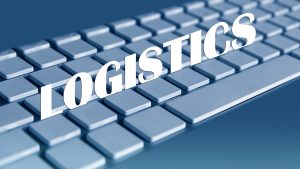Written by: Shantha Martin
About the author: Chief Executive Officer at PENTAGON Group

Innovative technologies influence logistics and its marketing in many ways . Advancements in the digitalization of supply chain including automation of logistics process such as Industrial Internet of Things (IIOT) , smart sensors , big data and Artificial Intelligence has paved the way forward.
Technological advances such as these are effectively being used in both internal and external logistics processes
The efficiency of a company’s internal logistics determines overall delivery and handling performance. Digitization and the introduction of new and innovative technologies – such as gesture of voice control, augmented reality (AR), and predictive analysis plays an indispensable role in boosting and optimizing capabilities, lead times and overall performance. They also make processes more agile, rendering supply flow management faster and more cost-effective.
Having set the stage for the reason for the use of in-plant logistics let us now consider what it consists of and what ought to be done to create greater value afor the customer. Segmented under 3 sections –
- Infrastructure
- Organization
- Systems
Infrastructure
In the context of in-plant logistics, infrastructure refers to the physical facilities, such as the plant, and the layout. This pertains mainly to the physical structure and attracts a significant capital expenditure which is undertaken at the start up of the plant. In an ideal situation the layout of the plant should be based on the material flow . There should be room for flexibility and customization.
Organization
The way in which the plant is organized can, and does, have a significant impact on the material flow. It should be designed to have optimized movement of inventory and shorter lead times.
A decentralized pattern with commodity specific inventory makes a plant have the material flow expedited and also optimize space . This also leads to better communication between manufacturing and stores in each decentralized sub-plant, leading to greater responsiveness and therefore, significantly shorter lead times.
Systems
The third element in the description of in-plant logistics is the systems that would be used to operate the plant on a day-to-day basis. These include:
- Physical Systems
- Information Systems
- Procedures
The Physical System refers to the storage and handling systems that are used. There is a grave misconception that automation necessarily results in better systems. While Automation in storage and handling is very useful, but automation for its own sake can be counter-productive. The equipment required needs to be based on the needs of the activity. It is essential to standardize equipment so that maintenance and procurement of parts and management is focused and organized. Secondly the equipment to suit the task should be made available to ensure the activities are carried out in streamlined manner. Thirdly the availability of the equipment is crucial while the focus on utilization is maintained.
Information Systems have been assuming greater importance in the current context than ever before. The reasons are twofold. First, it is the availability of affordable hardware and software, including bar coding devices that have made real-time “real”. Secondly, people have started to understand the importance of a well-structured information system.
Customers now understand that one of the reasons for high inventories is the lack of accurate inventory data. They are starting to demand better real time information on the status of their orders.
Procedures, which form the last but not least of the systems, are concerned with how the material will actually move. In the context of focused factories, the movement of material will be extremely simple as the distance it has to move is greatly reduced. In some of the world-class companies, the storage is directly at the point of use. Maruti is one example where the incoming material does not pass through any receiving or inspection, but is delivered directly by the vendor to the line. which should pull material from the finished goods store based on actual sales. The finished goods store should, in turn, pull material from the line and the entire process should continue in this fashion until the vendor’s end.
Value and Cost
It would be inappropriate to close this article without touching on the concept of value and cost. Most companies are concerned with cost cutting exercises, as mentioned earlier. But few have paid adequate attention to the concept of value of a certain activity. For example, several people refer to storage and handling as a non-value adding activity. But, if there is no value added, one ought to be able to totally eliminate it. The fact of the matter is that these functions offer a different type of value Instead of “form utility” provided by manufacturing, these activities provide “time and place utility”. Quite simply, eliminating these activities would bring the entire plant to a halt very quickly. Every activity if studied well basis its benefit and the apportioned cost and a constant improvement in this area can yield some very significant benefits to the manufacturing community. The success of In plant Logistics greatly depends on the linkages created between the material flow , production process and the information made available.
Having explained the the role played by In Plant Logistics in the overall plant operations it has a significant impact on the Marketing and Sales division of an Organization as the overall presentation of the products to the customers in a wholistic manner which involves availability , cost , efficiencies and timeliness .
Marketing logistics involves planning, delivering and controlling the flow of physical goods, marketing materials and information from the producer to the market. The aim is to meet customer demands while still making a satisfactory profit. Thus, as effective In plant logistics system contributes immensely to the achievements of the business and marketing objectives of a firm. It creates time and place utilities in the products and thereby helps in maximizing the value satisfaction to consumers.
The relationship between Marketing and Logistics and in specific in this case of In Plant Logistics it is very essential to ensure customer satisfaction by focusing on order to delivery time, evaluating and redefining standard operating procedures, examining transportation and redesigning cost and time efficiencies and optimizing warehouse management for maximum productivity .
The close working relationship between Marketing and In Plant Logistics ensures the products are delivered on time and an optimal cost enabling the customer to compete with in the domestic and International markets and enhancing orders and loyalty as customers constantly look at rationalizing the costs without compromising on quality and efficiencies.
Research Courtesy
Indian Institute of Materials Management and Smart Industry Solutions.
Sources:
